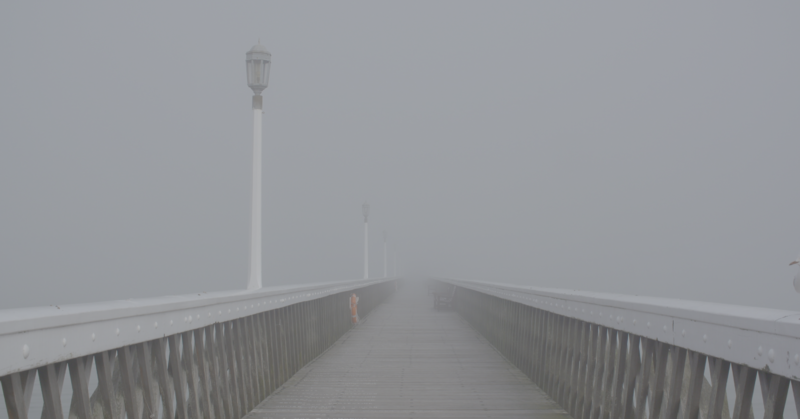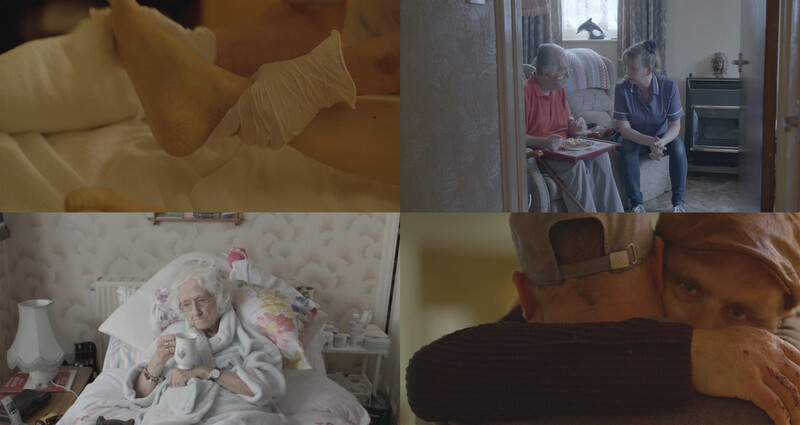- 00.0Cover & EditorialAnchi Lin, Letters & Handshakes
- 00.1Care and Dying: Albert Banerjee in Conversation with Steven EastwoodAlbert Banerjee, Steven Eastwood
- 00.2Care as InfrastructureAi-jen Poo, Letters & Handshakes
- 00.3covering, distribution, cleaning my instrumentRadiodress
- 00.4Dilemmas of CareEmma Dowling
- 00.5CareForceMarisa Morán Jahn
- 00.6Antinomies of Self-CareLauren Fournier, Lynx Sainte-Marie, Sarah Sharma
- 00.7Other forms of convivialityPark McArthur, Constantina Zavitsanos
- 00.8It Takes Work to Get the Natural LookChloé Roubert, Gemma Savio
- 00.9Water is LifeOnaman Collective
- 00.10Seniors' Advocacy in OntarioCare Watch, Kassandra Hangdaan
- 00.11In Sickness and StudyCarolyn Lazard
- 00.12Shut. Muskrat. DownLabrador Land Protectors
Care and Dying: Albert Banerjee in Conversation with Steven Eastwood
- Albert Banerjee
- Steven Eastwood

Care and death are intimately linked. That we die means we are vulnerable, frail, and at risk—and are therefore in need of care. Mortality provides the foundations for care, yet the fact of our mortality is typically hidden in institutions or spoken of solely through optimistic metaphors of disease and risk, which suggest possibilities for cure and control. They gesture towards an exit; but ultimately, there is none. So, how might we courageously confront our mortality? How can mortality be made visible in ways that contribute to taking care?
Confronting the challenge of representing the end of life is Steven Eastwood’s hauntingly beautiful film, Island.11Island will have its international premiere in the summer/fall of 2017. The sibling multi-screen installation The Interval and the Instant will open at Fabrica in the UK in October 2017 and at the Blackwood Gallery in winter 2018, during the fourth circuit of the Take Care exhibition series.It follows four people in an English hospice, portraying the transition away from “active” personhood and observing the moment of death. The hospice’s location on the Isle of Wight may be coincidental, but it is an analogy for death’s place in contemporary Western society: set apart and sequestered. The film wonderfully captures how death is both mundane and otherworldly. I sat with Eastwood to discuss Island in the context of taking care.
This is not an easy film to watch: the close-up images of dying, the lingering. It brings the viewer face-to-face with death…
I wanted to be witness to the moment of death because I felt that this was taboo in our society, and certainly taboo if the image didn’t originate from a familial relationship, like a partner or a sibling filming a loved one. I wanted to ask why this is taboo. I wanted to see if it was possible to give attention to the end of life while resisting metaphor.
The idea of resisting metaphor is fascinating. Susan Sontag railed against the use of metaphor in her book on cancer, and later she came to accept metaphors as inevitable. In the context of death, our metaphoric choices tend to conceal it, or we understand it through medical metaphors of disease and risk that set up limited orientations to mortality. Your film is unique in its frankness. It is not a neutral gaze.
I wanted to ask: Can there be an ethics of aesthetics? If the person with terminal illness is denied a certain kind of participation in our culture, denied a certain kind of image, then denying that person an aesthetic is surely also contributing to how they are repressed in our culture. The film features aesthetic remarks, like pans and tilts and a colour palette, that reflect the strangeness and beauty of the situation. It also states that a filmmaker is present. There is an artist’s point of view. This is not a clinical, detached, disassociated eye. This is an eye that looks, and then moves. Things like a focus pull or a pan across a bed can be tactile and attentive, rather than objectifying.
How care reveals itself in Island is instructive. As a researcher working in elder care, I have found a a lack of diverse images of care, often restricted to hands being held, or a nurse pushing an older person in a wheelchair. So I was intrigued by how care seemed to recede into the background in your film.
I had a greater challenge accessing images of care than I did finding people who had a terminal diagnosis and were interested in participating in the film. I realize that this is a generalization, but I think it holds up: carers, particularly nurses, are trained to be selfless, and they have a unique way of being with people while partially erasing their own presence. I was halfway through one year of filming when I realized that I had no images of care. Whenever I produced my camera the nurses would vacate the frame. We had a meeting with the nurses and said, “Listen, we are giving an inaccurate representation. If you see what I’m filming, it looks as though these people are abandoned.” That produced a powerful shift in the nurses’ attitudes. They understood that it was important to act against their default behaviour. They had to allow themselves to be visible.

One of the most unique aspects of your film are the close-ups of dying people, sleeping, breathing, being. This is an important contribution to contemporary representations of dying, and I was surprised by the access you were granted. While not voyeurism, the lingering is disconcerting.
One of the things I wanted to ask was: When do we look, when do we look away, and why? How can I continue to look when it may have seemed appropriate to look away? How do we maintain what is appropriate in terms of how we look? I wanted the film to continue to look when the person being filmed is not conscious and cannot return the look. In documentary film, a form of contract hinges on the returned look. If we see that the person being filmed is mindful of the camera, there is a tacit agreement that filming is permitted. When the viewer cannot see that the subject knows they are being filmed, permission is in crisis. However, I feel the film does establish consent and permission and invitation—aurally as well as visually—and, I hope, says that a person who is not conscious can be permitted an image.
The location of the hospice on an island is analogous to the status of death in contemporary Western society. Our mortality—our vulnerability—is hidden, sequestered in institutions like hospitals and nursing homes. It also speaks of the place of care, which, while central to the reproduction of our society, is treated as a marginal matter, a private issue.
It’s interesting to me that the end of life, our mortality, is couched in terms of vulnerability and dignity, but rarely spoken of as natural. I originally planned to make the film working with two hospices in London, but we ended up at a hospice on an island off the south coast of England. Now I realize how fortunate I was, not only with this small community, and not only because the community of care on the island is more integrated and visible, but also because I was given this enigmatic setting—a small island you access by ferry. The island is dependent on ferries for food, supplies, and medicine, and people who need specific chemotherapy must take the ferries to the mainland. So, there’s this barrier, this sense of being separate from the wider country. And of course, because it’s an island, it has particularly stunning landscapes and weather systems that give the film a floating aspect. I was interested in taking the viewer into an environment which is not entirely familiar and not entirely anchored, so the island and the ferries enabled me to make the film float, to make the film absolutely familiar but also suggestive of another world. The ferries and the pier allowed me to put metaphor in the frame and say that we need metaphor. But metaphor takes us only so far. Metaphor functions, like humour, as a safe place to launch into more challenging and difficult spaces. At points in the film the ferries are metaphorically there, but towards the film’s end, metaphor is gone and we are left with direct images, images of unfolding time, including a seven-minute sequence in which we see someone die. The island is central to the project.
These images make an important contribution to our understanding of death and dying. Your film becomes part of the process of caring for ourselves as mortal beings. I’m curious whether you see a link between care and your position as a filmmaker?
I see similarities between the role of a carer and the role of an artist. In a situation like the making of this film, the artist is something of a stranger, or an interrupter. The filmmaker arrives for a limited time into the centre of a life, without knowing the history of that life, yet is granted uncommon relationships and access, because of a newness and strangeness. For me, one of the exciting things that filmmaking can do is produce new behaviour, for both filmmaker and subject. Talking with nurses, I realized they have similarly uncommon relationships with patients. Often their patients show parts of their personalities or reveal intimacies and private thoughts that they don’t share with their families. Nurses are also physically proximate to patients, so they know every aspect of them. This creates a window, almost a liberating opportunity, for the development of new relationships that don’t have to conform to patterns and histories.
See Connections ⤴
Steven Eastwood is an artist and filmmaker whose practice spans documentary film, installation-based moving image, media arts, and theory. He holds a PhD from the Slade School of Fine Art, University College London, and teaches film practice at Queen Mary University of London. He has held Visiting Lecturer positions at Harvard University, University of Greenwich, and University of Buffalo. His feature-length film, Island, premiered at BFI London Film Festival in 2017 and the sibling multichannel video installation, The Interval and the Instant, was presented at Fabrica (Brighton). His feature film Buried Land was an official selection at the Tribeca, Moscow, Sarajevo, and Mumbai film festivals. Recent and forthcoming exhibitions include Fabrica (Brighton), QUT Gallery (Brisbane), Globe Gallery (Newcastle), KK Projects (New Orleans), ICA (London).
See Connections ⤴